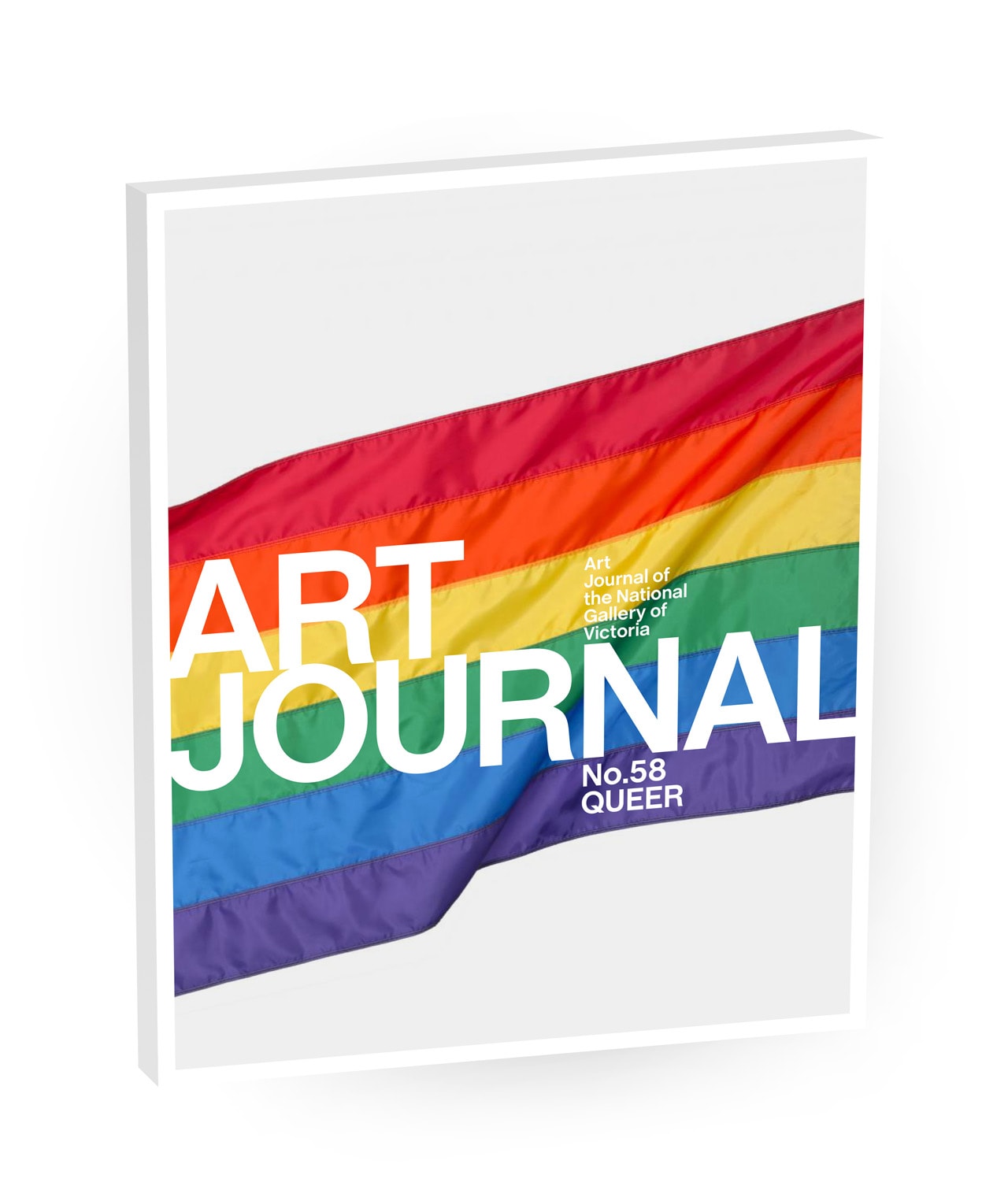
This edition of the Art Journal of the National Gallery of Victoria was developed alongside the exhibition QUEER: Stories from the NGV Collection. The idea for this edition first emerged back in 2017 when Australia was immersed in a debate around marriage equality that resulted in a national plebiscite. At the time, we decided to look at the NGV Collection ‘through a queer lens’, curious to see how many stories the Collection could reveal. Initially we did not anticipate just how much we would find, and so what started as a modest collection of essays evolved into a major NGV exhibition of more than 400 works, presented with an accompanying 600-page catalogue. The exhibition was put together by an interdepartmental team of curators, namely Ted Gott (Senior Curator, International Art), Myles Russell-Cook (Senior Curator, Australian and First Nations Art), Meg Slater (Curator, International Exhibition Projects), Angela Hesson (former Curator, Australian Art) and Pip Wallis (former Curator, Contemporary Art).
In the words of Cristoph Ribbat, author of Queer and Straight Photography (2001), ‘Queer as a concept runs against all definitions, all fixed meaning, forever questioning, redeploying, twisting terms, texts and itself from conventional usage’. Rather than attempting to provide a definitive history of queer art, the exhibition explored the NGV Collection from a queer perspective, presenting and interpreting queer concepts and stories.
This queer-themed edition of the Art Journal dives deeply into six of these stories. The issue opens with an essay by Meg Slater, exploring the social and political history of what is perhaps the most recognisably ‘queer’ object of contemporary design, Gilbert Baker’s Rainbow flag, 1978. Annika Aitken considers the complex politics of desire and spectatorship that infuse an image of sex between what appears to be two women, in Edo’s ‘floating world’ in the recently acquired Shunga scroll, 1840–70s.
Ted Gott offers a radical new reading of British modernist painter Glyn Philpot’s Oedipus, 1931–32, as a queer self-portrait. Lisa Beaven adopts an expansive definition of queering in her examination of the idea of ‘chosen family’ in Jacopo Amigoni’s Portrait group: The singer Farinelli and friends, 1705–82.
Emil Cañita transforms a conversation with pre-eminent Australian photographer William Yang, into a politically charged autoethnography, using self-reflection as a method of understanding the queer meanings that exist across Yang’s oeuvre. Neelika Jayawardane dives deep into the practice of South African visual activist and photographer Zanele Muholi, situating their work within a discourse of queer and racial photographic histories.
The exhibition of works from the NGV Collection was enormous in scope. Spanning historical eras and a diverse range of media, the show explored queerness as an expression of sexuality and gender, a political movement, a sensibility and an attitude that defies fixed definition. This queer edition of Art Journal represents a continued focus on queer scholarship inspired by the NGV Collection.
Angela Hesson and Myles Russell-Cook, Editors